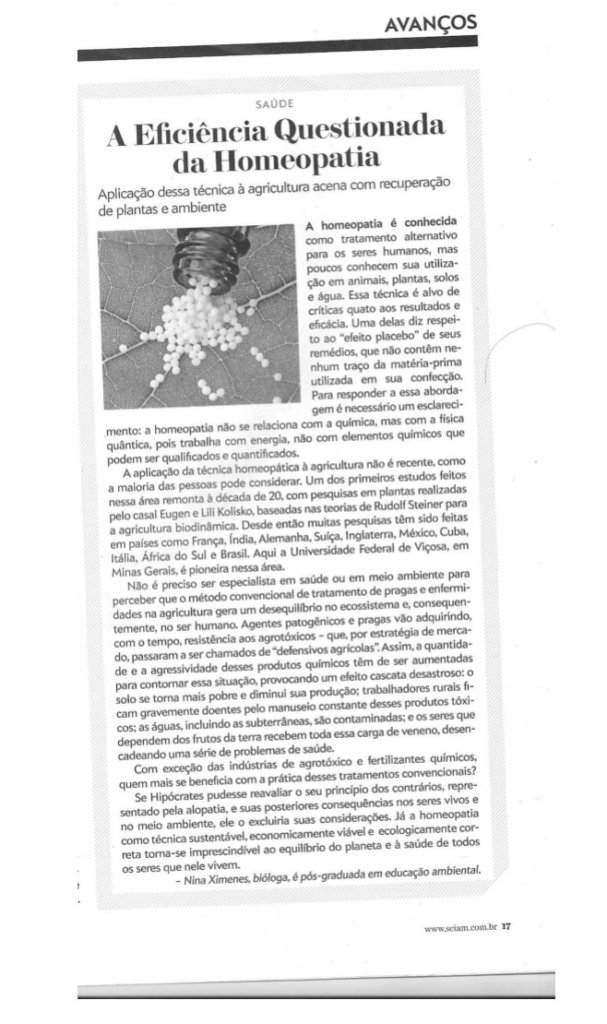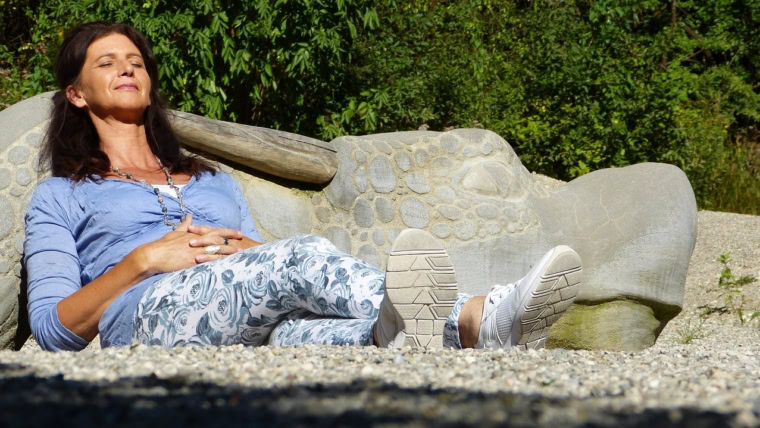The Efficiency of Homeopathy Has Been Questioned
Application of this technique to agriculture and the recovery of plants and the environment
Homeopathy is known as an alternative treatment for human beings, but few know about its use in animals, plants, and even in water. This technique is not free from criticism regarding its results and effectiveness. One of them concerns the “placebo effect” of its remedies, which do not contain any trace of the raw materials used in their production. To respond to this approach, clarification is necessary.
Homeopathy is not related to chemistry, but rather to quantum physics, because it works with energy, not with chemical elements that can be qualified and quantified.
The application of homeopathic techniques to agriculture is not recent, as most people may consider. One of the first studies carried out in this area dates back to the 1920s, with plant research carried out by Eugen and Lili Kolisko, based on Rudolf Steiner’s theories of biodynamic agriculture. Since then, many investigations have been carried out in countries such as France, India, Germany, Switzerland, England, Mexico, Cuba, Italy, South Africa, and Brazil. The Federal University of Viçosa, in Minas Gerais, is the pioneer in this area.
You do not need to be a specialist in health or the environment to realize that the conventional method of treating diseases and illnesses in agriculture generates an imbalance in the ecosystem and, consequently, is not humane. Pathogenic agents are gradually acquiring resistance to agrotoxics – which, due to market strategy, will be called “agricultural defensive agents.” Thus, the quantity and aggressiveness of these chemical products must be increased to address this situation, causing a disastrous cascade effect: they only become poorer and their production decreases; rural workers are seriously ill from constant handling of toxic products; waters, including underground, are not contaminated; the beings that depend on the fruits of the earth receive all that load of poison, triggering a series of health problems.
With the exception of the agrochemical and chemical fertilizer industries, who benefits most from the practice of these conventional treatments? If Hippocrates could reassess his contrary principles, represented by allopathy, and its subsequent consequences for living beings in the environment, he would exclude his considerations. Homeopathy, as a sustainable, economically viable, and ecologically correct technique, becomes essential for the balance of the planet and the health of all the beings with whom we live.
-Nina Ximenes, Biologist and Postgraduate in Environmental Education
Original text in Portuguese provided below for reference:
A Eficiência Questionada da Homeopatia
Aplicação dessa técnica à agricultura acena com recuperação de plantas e ambiente
A homeopatia é conhecida como tratamento alternativo para os seres humanos, mas poucos conhecem sua utiliza- ção em animais, plantas, solos e água. Essa técnica é alvo de críticas quato aos resultados e eficácia. Uma delas diz respei- to ao “efeito placebo” de seus remédios, que não contêm ne- nhum traço da matéria-prima utilizada em sua confecção. Para responder a essa aborda- gem é necessário um esclareci-
mento: a homeopatia não se relaciona com a química, mas com a física quântica, pois trabalha com energia, não com elementos químicos que podem ser qualificados e quantificados.
A aplicação da técnica homeopática à agricultura não é recente, como a maioria das pessoas pode considerar. Um dos primeiros estudos feitos nessa área remonta à década de 20, com pesquisas em plantas realizadas pelo casal Eugen e Lili Kolisko, baseadas nas teorias de Rudolf Steiner para a agricultura biodinâmica. Desde então muitas pesquisas têm sido feitas em países como França, India, Alemanha, Suíça, Inglaterra, México, Cuba, Itália, África do Sul e Brasil. Aqui a Universidade Federal de Viçosa, em Minas Gerais, é pioneira nessa área.
Não é preciso ser especialista em saúde ou em meio ambiente para perceber que o método convencional de tratamento de pragas e enfermi- dades na agricultura gera um desequilíbrio no ecossistema e, consequen- temente, no ser humano. Agentes patogênicos e pragas vão adquirindo, com o tempo, resistência aos agrotóxicos- que, por estratégia de merca- do, passaram a ser chamados de “defensivos agrícolas”. Assim, a quantida- de e a agressividade desses produtos químicos têm de ser aumentadas para contornar essa situação, provocando um efeito cascata desastroso: o solo se torna mais pobre e diminui sua produção; trabalhadores rurais fi- cam gravemente doentes pelo manuseio constante desses produtos tóxi- cos; as águas, incluindo as subterrâneas, são contaminadas; e os seres que dependem dos frutos da terra recebem toda essa carga de veneno, desen- cadeando uma série de problemas de saúde.
Com exceção das indústrias de agrotóxico e fertilizantes químicos, quem mais se beneficia com a prática desses tratamentos convencionais? Se Hipócrates pudesse reavaliar o seu princípio dos contrários, repre- sentado pela alopatia, e suas posteriores consequências nos seres vivos e no meio ambiente, ele o excluiria suas considerações. Já a homeopatia como técnica sustentável, economicamente viável e ecologicamente cor- reta torna-se imprescindível ao equilíbrio do planeta e à saúde de todos os seres que nele vivem.
-Nina Ximenes, bióloga, é pós-graduada em educação ambiental





